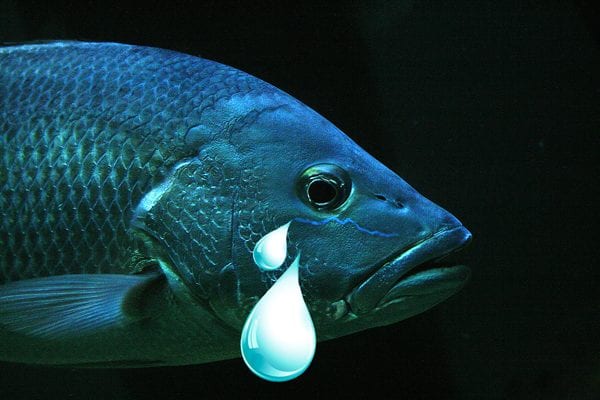Sadfishing is posting emotional or dramatic personal content to gain sympathy or attention from the online community. Sadfishing is a relatively recent term, but fishing for sympathy on and offline is not new behavior. The Boy Who Cried Wolf from Aesop’s fables was sadfishing when he tricked the villagers into rushing to his aid. Sadfishing is increasingly being used to accuse people of attention-seeking and criticize or belittle their online content, whether they were sadfishing or not. The trouble is, how do you know when someone is sadfishing and when their distress is real? We don’t, and the danger of missing a genuine call for help is much greater than putting up with a bit of drama.
Wanting Attention is Normal
Attention-seeking behavior is normal. People are social. We all want the attention of others. It makes us feel loved and safe. Social connection is a primary contributor to our wellbeing. However, Sadfishing describes manipulation. It is the intentional exaggeration or pretending to go through a hard time to get the notice we all desire.
When someone labels a post as sadfishing, it is a subjective judgment made by the reader, not the person posting. There is no way to accurately judge the authenticity of a post or the level of distress. While some people may be exaggerating to get a response, posting something dramatic is equally likely to be someone reaching out for support or a bit of connection or to just feel less lonely. Someone may want or need attention because they’re in emotional distress
There are many reasons why people accuse dramatic or overly emotional posts of being sadfishing. Let’s face it, appearing to be miserable to get attention is a trick or a con, pure and simple. The trouble is, it works. People are, for the most part, empathetic and respond to emotional appeals. But no one likes to be duped. It makes them feel gullible and weak. Manipulation is toxic behavior and, more to the point, it makes people angry. When people are mad or feel vulnerable, they protect themselves. Labeling a post sadfishing is a way to devalue it and get back some of their own. Or it may be a preemptive strike against future cons. Negative posts can bring out the worst in people (e.g., Scott et al., 2020).

Photo by Tim Mossholder on Unsplash
Sadfishing and Cancel Culture
Sadfishing is another form of cancel culture. It denies the legitimacy of a person’s feelings or experience. Like other forms of canceling, it is reactive. It requires no insight, inquiry or evidence but leaves plenty of room on the bandwagon for others to climb aboard. Labeling a post as sadfishing is an attempt to invalidate the emotional experience of the person behind the post. Some posts deserve to be singled out as sadfishing. It’s the cost of “crying wolf” with repeated hardships or outing a commercially-motivated ‘trauma’ such as Kendall Jenner’s disclosure about acne sponsored by Proactiv acne treatment. But, labeling an emotional post as sadfishing can also be a form of cyberbullying or victim-blaming.
Nevertheless, we would do much better to give our friends the benefit of the doubt and assume the distress is real by reaching out until we know better.
Teens, in particular, feel a strong need to connect socially with friends. Social interaction is how people learn to navigate the social world, regulate emotions, figure out who they are and what they want to be. The attention of others gives us social cue about how something is received, communicating the social norms of our culture or community. Attention to an online post is relational and perceived as social support and, as such, contributes to identity development and self-image.
Emotion Attracts Attention
Attention is a complex cognitive function—it is a process of selection and interpretation of external information through our five senses (sight, sound, touch, smell, and taste). Our automatic response makes us pay attention to things that are out of the ordinary to assess their threat level —especially negatives ones.
In the infinite space of social media, emotional content helps us figure out which things to pay attention to. Social media makes all kinds of communication easier and, while it changes the relative importance of any single post, the fluidity makes disclosure easier.
The Public Display of Distress: Benefits and Dangers
Is the public display of distress bad? Thanks to COVID and social isolation, the increased frequency of social media use and the heightened pandemic-related emotional pressures increase the likelihood of more expressions of extreme emotions. That’s not necessarily bad. Social media is a great way to feel connected and supported and to be part of a community. Sometimes, getting thoughts and feelings out in the open makes us feel better, and feedback can normalize experience by knowing that others feel the same way.
There are, however, downsides. Social media is permanent and searchable—and nothing is really private. Excessive expressions of distress can stick with you and become part of your digital identity available to everyone from Grandma to admissions or job recruiters. Emoting publicly also puts you at risk of being accused of sadfishing, which can be hurtful, especially if you were feeling down in the first place.
We may feel gratified and supported by the attention of strangers, but we never know who is responding to us on social media. Lots of people like to give advice, but few are trained or qualified to help. Teens should also be aware that continual posting of distress signals vulnerability, making them targets of people who may encourage more distress to feel powerful or who enjoy others’ pain. Chatrooms are particularly bad places to vent anguish as it increases the risk of being targeted by sexual predators.
Despite those negatives, access to mental health resources for many, especially teens, is limited by physical and social barriers. Limited access makes online the only place to seek support for mental distress. Many teens genuinely seek support online (Rideout & Fox, 2018) and being accused of sadfishing when they need help makes them feel worse.
The Bottom Line: How to Respond to Sadfishing
Because there is no way to know if a friend is attention-seeking or in serious distress, all such posts should be taken seriously. The best response is to reach out to the friend privately and offer support. The best responses are the ones that express empathy rather than sympathy. Sympathy perpetuates the “poor me” phenomenon, whereas empathy and compassion say, “I get it, how can I help?” If there is concern about self-harm, teens should also speak with a trusted adult since they are not trained to deal with serious or sensitive issues on their own. There are online support services for young people where kids can call, send text messages, or chat with qualified professionals who can provide immediate support or referrals to healthcare providers. Talkspace, BetterHelp, and Teen Counseling are all places to check out. Most have Facebook pages where you can get an idea of what they offer.
Parents’ best tool is conversation with their tweens and teens. Start early and talk often so you have an open line of communication and a basis for trust. If you’re aware that your teen is posting signals of distress, it should not be minimized. It should be followed up in an open and supportive and, most of all, non-judgmental manner. We all have hard times. It’s easy to think you’re the only one suffering or feeling overwhelmed, especially as a teen and especially now, during social isolation.
References
Rideout, V., & Fox, S. (2018). Digital health practices, social media use, and mental well-being among teens and young adults in the US. Articles, Abstracts, and Reports. 1093. https://digitalcommons.psjhealth.org/publications/1093
Scott, G. G., Brodie, Z. P., Wilson, M. J., Ivory, L., Hand, C. J., & Sereno, S. C. (2020). Celebrity abuse on twitter: The impact of tweet valence, volume of abuse, and dark triad personality factors on victim blaming and perceptions of severity. Computers in Human Behavior, 103, 109-119. https://doi.org/10.1016/j.chb.2019.09.020

 Dr. Pamela Rutledge is available to reporters for comments on the psychological and social impact of media and technology on individuals, society, organizations and brands.
Dr. Pamela Rutledge is available to reporters for comments on the psychological and social impact of media and technology on individuals, society, organizations and brands.
This is so insightful, Pamela! You always dive to the deeps and bring up something of real value.
The social distance (yes, I said it) of social media makes it so easy to take potshots at one another without being accountable for the hurt we cause. We see no real pain on no real face.
I suspect there’s a lot of ”sadfishing” out there, but even then, I suspect there’s woundedness even causing that. Enough of my soapbox. I just wanted you to know I really liked the article!
Thank you!
Sandy Brownlee
Thanks, Sandy – and it’s so great to hear from you! I agree – plenty of psychological wounds out there thanks to COVID. I hope you and yours are well.